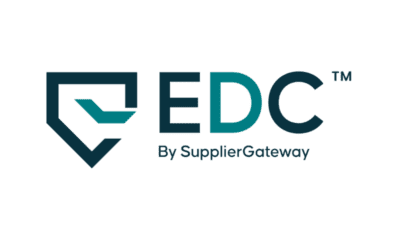Most organizations today deal with a very large number of vendors and suppliers. Effectively managing and monitoring all of them is an extremely difficult and sometimes even impossible task to undertake. Grouping your suppliers into those that are critical to your business operations and those that are less critical is one of the easiest ways to identify which suppliers your organization should be monitoring.
According to Gartner, relationships with strategic vendors are increasingly key to business performance.
These relationships with strategic vendors and suppliers start with identifying your key vendors and monitoring their performance with agreed-upon metrics. Monitoring vendor performance, also known as vendor performance management (VPM) will help your company achieve the highest levels of performance from its key vendors and suppliers while also mitigating risk.
How to Identify Key Suppliers
Key suppliers, also known as critical suppliers or vendors, are suppliers that perform significant business functions or provide key goods or services to your business.
When trying to figure out if a supplier or vendor is critical, ask yourself these questions:
- If the supplier fails to meet expectations, would your business encounter significant risk or damage?
- Does the supplier significantly impact your customers?
- Does managing the relationship and managing risk with a particular supplier require significant investment of resources?
- Would your company’s operations be majorly impacted should you have to either replace this supplier or bring this supplier’s functions in-house?
You can also ask yourself these more direct questions as well:
If we lost this vendor, would it cause a material disruption to the company?
Would that disruption affect our customers?
Would the time needed to recover take longer than one business day?
If you answered “yes” to any of these questions, the supplier you have in mind is a key or critical supplier.
How to Monitor Your Critical Suppliers
Because your critical suppliers are vital to the success of your business, you’ll need to monitor them more closely than your other suppliers. Because of their necessity to your business, you should concentrate your monitoring in these areas:
- Increased due diligence. Performing deeper due diligence may be required for a critical vendor. For example, along with your standard reviews and expectations, certain vendors may require on-site inspections. Also ensure that your critical suppliers are properly insured to cover any disruptions or data breaches.
- More specific contract standards. You may need to review your contracts with your critical suppliers and include language that is specific to that relationship. This language should act as extra protection for your company, and spell out provisions and steps should products, materials, or services change at the supplier.
- Identify and review fourth parties. When your suppliers contract out to other vendors, your risk increases. Know who your critical suppliers contract to, and determine if these fourth parties have access to critical, non-public information about your company.
- Have an exit strategy. This conversation should be had with your critical suppliers at the beginning of the relationship. If your supplier is reliable and running a good business, they should have no issue with this conversation. Understanding what will happen if there’s a sudden loss or should the relationship need to end is important for both parties.
Best Practices for Managing Key Suppliers
Once your key suppliers and vendors have been identified, you’ll need to establish key performance indicators (KPIs) that you’ll track for these suppliers. These KPIs are generally agreed upon and contractual, so suppliers and buyers know exactly what standards and expectations they’re responsible for. When both buyers and suppliers know and understand vendor management KPIs, success is much more likely.
Common supplier management KPIs include:
- Quality. This can relate to the number of operational failures, administrative errors, the actual quality of a purchased product, how quickly issues are resolved, number of coding errors, and the like.
- Delivery. On time deliveries, lost in transit, or breakages during delivery, system availability/uptime, defect rates, or number of change requests completed on time.
- Innovation. Product design improvements, material cost savings, proposals for system improvements and overall speed increases.
- Risk. Products and services comply with laws and regulations, are financially stable, and uphold security requirements with no security breaches. Reputational risk should also be addressed.
- Cost. Frequency of cost increases.
- Overall Customer Service. Customer satisfaction, handling customer complaints, overall communication.
When establishing KPIs for your critical suppliers, keep the following in mind:
- Vendor management KPIs should be established for each critical portion of the product or service, and goals should be realistic and achievable.
- KPIs should reflect the importance of the supplier relationship and also be both quantitative and qualitative.
- Base your KPI goals on the minimum required level of performance.
- If missing a KPI accrues a penalty, you should also reward a supplier for exceeding expectations.
- KPIs should be reviewed and adjusted on a regular basis.
While critical suppliers and vendors often bring additional risk to your business, they also bring lots of additional benefits like innovation and cost savings. Appropriately managing and monitoring your key suppliers helps mitigate risk while building a strong foundation for your key supplier relationships.
SupplierGateway’s Supplier Risk Management software can significantly reduce your supplier management workload while increasing your time to market. Schedule your demo now and see how our software can reduce your risk without halting your business.












